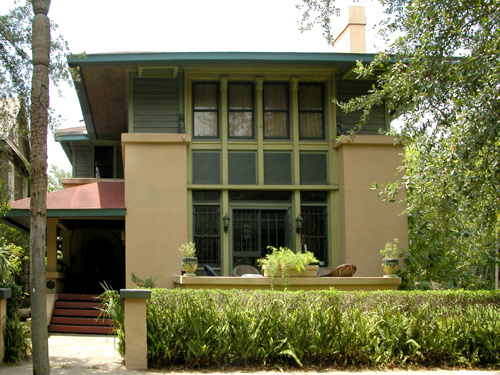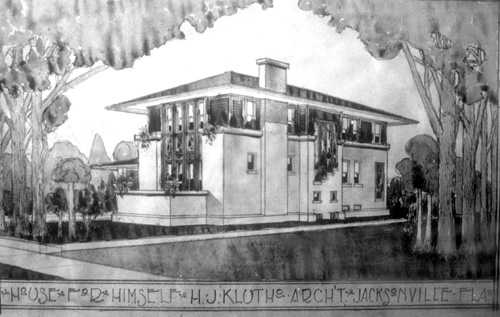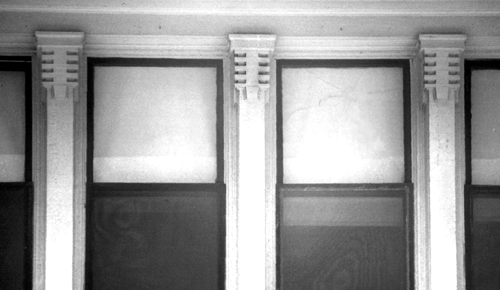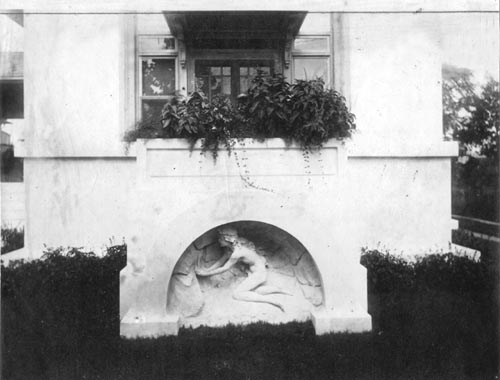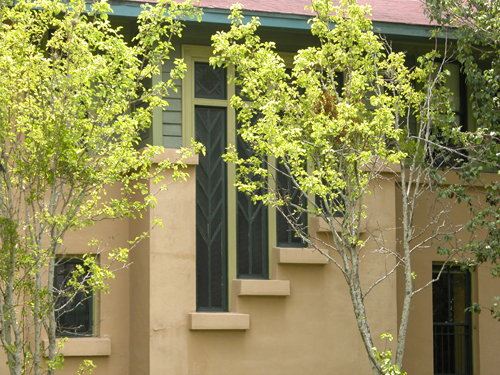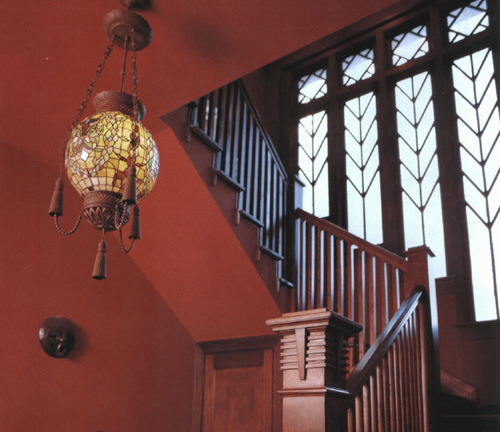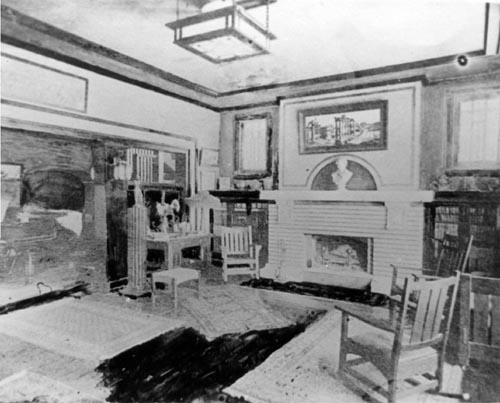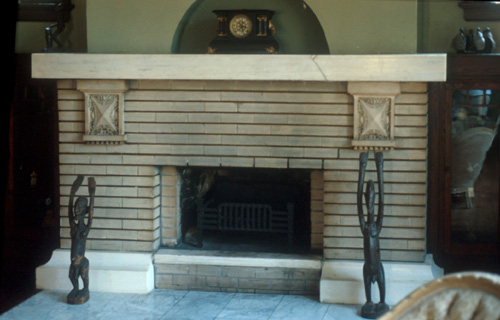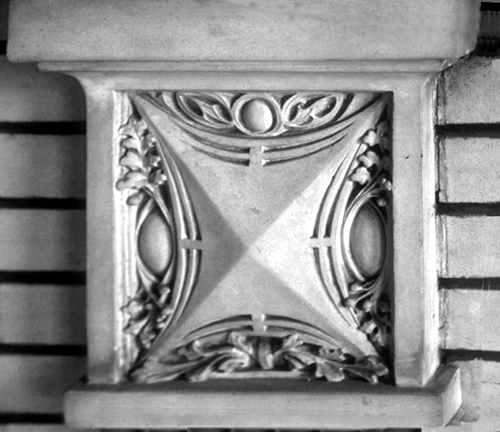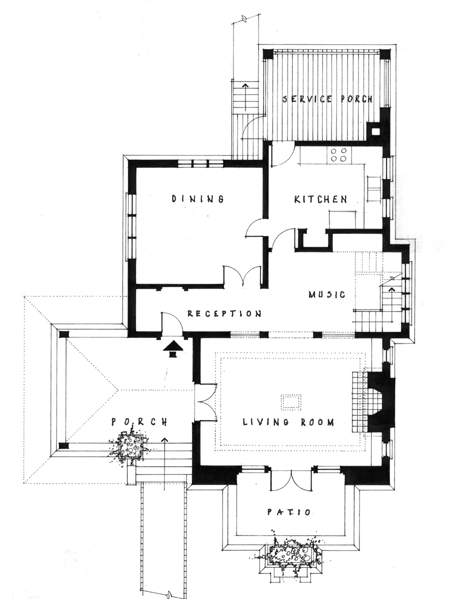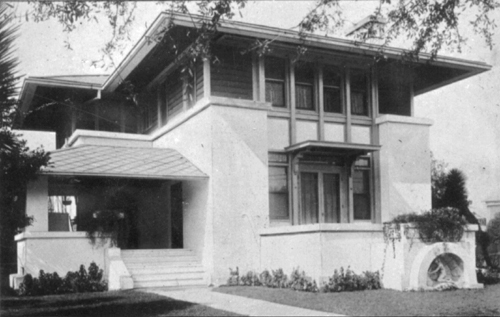 |
|
Henry John Klutho House Henry John Klutho, 1908
The first Prairie School house in Florida—perhaps in the South—was the residence designed by Henry John Klutho at 2018 Main Street. Built as his own home, it emphasized his public commitment to this important modern style. According to architect Robert C. Broward, this house put Klutho in the limelight as never before:
The Klutho residence is a two-story Prairie House constructed of a 2-by-6-inch wood stud frame, sheathed with a white stucco exterior up to a continuous second-floor projecting sill line, which wrapps around the house. Above this sill, Klutho placed a continuous band of bedroom windows and dark-stained horizontal lapped wood siding. The projecting sill line at the second-floor windows steps down in a rhythmic progression at the north elevation of the design. This arrangement expresses the main stairwell of the house on the exterior, with full-height leaded-glass windows with abstract “tree of life” designs illuminating the interior. The house originally faced east on Main Street, and the living room, with the master bedroom above it, received the early morning sun. This main facade features extensive glass with wood mullions running the full two-story height between projecting stucco piers. French doors open from the living room onto a raised patio, which is afforded privacy from the street by an encircled three-foot-high stucco parapet. The patio reaches out from the house as a visual, yet sequestered, connection to the public sidewalk. It was also the first of many local buildings of the style that displayed the Prairie cross motif (which appears as capitals at the top of the mullions on the front of the house and the newel post inside) that was adapted from the ornaments on Wright's Larkin building. Klutho stirred further controversy when he added a planter featuring the statue of a nude nymph on the front of the house.
Klutho invested heavily in the motion picture industry and built a large movie studio on property he owned behind the house. Over the years, many of his politically and financially powerful friends were guests. Senator Fletcher and Governor Napoleon Broward visited, as well as many motion picture stars such as Tom Mix, Lillian Russell, Mary Pickford, and Oliver Hardy. Frank Lloyd Wright is said to have once visited Klutho’s house, but no precise date has been substantiated.
In 1913 he designed and built the 3-storey Klutho Apartments next to the house. This wonderful Prairie School couplet on Main Street featured two of Jacksonville’s most radically modern buildings side-by-side.
With the decline of the movie industry and Klutho’s finances, he sold this lot on Main Street in 1925 and moved the house around the corner to its present location on the old movie studio property. By 1927 he had converted the house to a duplex rental unit, severely altering its appearance in the process: the statuary and planter were removed; the porch and the large roof overhang on the east side were taken off; the stair-stepping of the west side windows was eliminated; and a Spanish-style arch and new outside staircase were added at the duplex entrance. Klutho moved back into this building in 1935, living out his life in the second-story apartment. The house has now been restored, thus assuring the preservation of one of Jacksonville’s most revolutionary residences.
Listed in the National Register of Historic Places in 1978.
Photos courtesy of Robert C. Broward and Wayne W. Wood. References |
|
Alabama • Arkansas • Arizona • California • Colorado • Florida • Georgia • Hawaii • Idaho Illinois • Indiana • Iowa • Kansas • Kentucky • Louisiana • Massachusetts • Michigan Minnesota • Mississippi • Missouri • Montana • Nebraska • New Jersey • New Mexico Nevada • New York • North Carolina • North Dakota • Oklahoma • Ohio • Oregon Pennsylvania • South Carolina • South Dakota • Tennessee • Texas Utah • Washington • Wisconsin
Australia • Canada • Dominican Republic • Japan • Netherlands • Puerto Rico • • • FAQ • Contributors • Random Notes • RIP • Prairie Bookshelf • The Unknowns |
